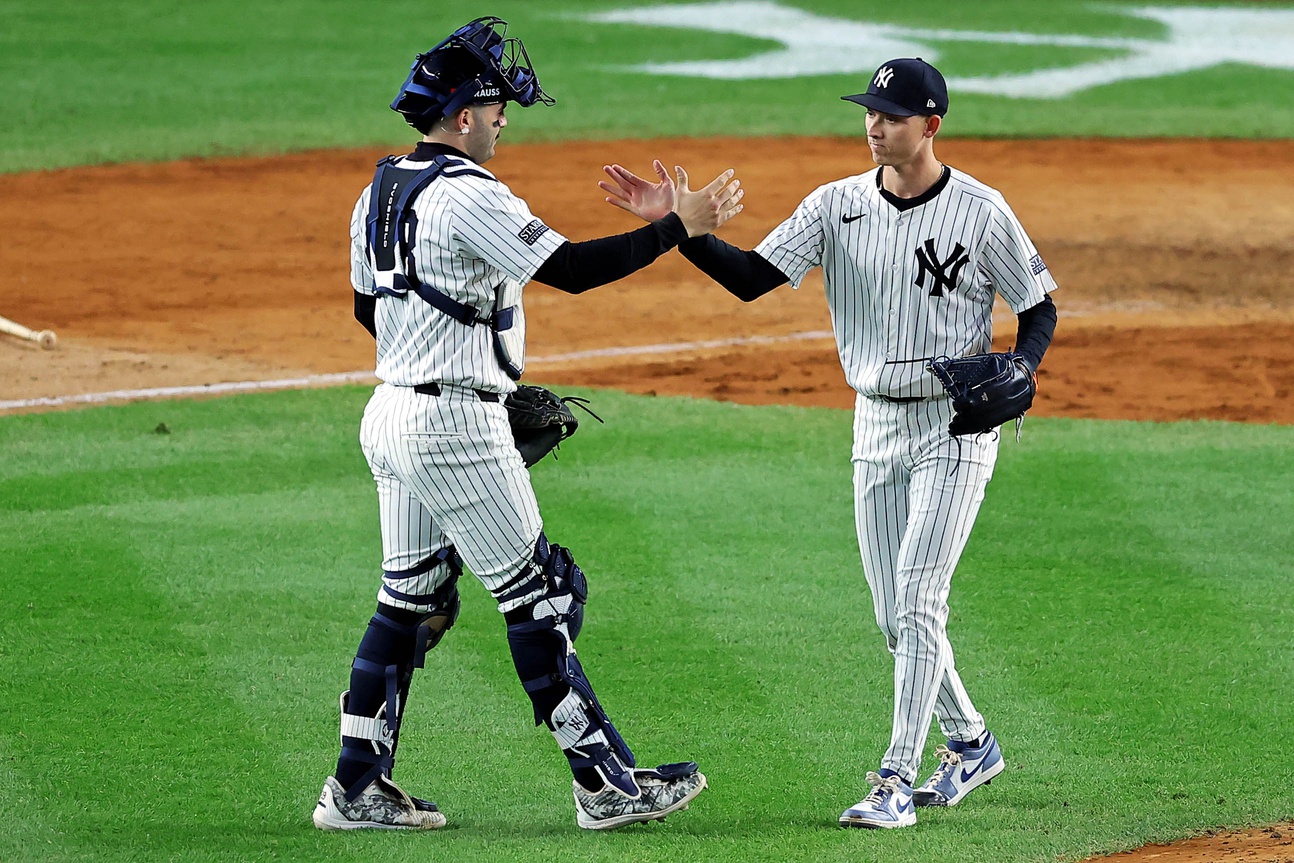Things are working out better than expected this postseason with regard to the New York Yankees bullpen, as it seems the closer debate has been firmly resolved and everyone now has a set role.
The Yankees were losing hope in their closer situation. Their confidence in Clay Holmes to save games was diminishing quickly. From the midway point to the end of the regular season, the issue threatened to become detrimental to the club’s future and postseason status.
The Yankees depended on Holmes consistently since he first arrived with the team. In the past, Holmes had proven to be a solidified closer, but his recent performances showed otherwise. Holmes finished the regular season with a seemingly respectable 3.14 ERA and 30 saves. However, he also recorded 13 blown saves, which was enough to second-guess his credibility.
This forced manager Aaron Boone and the front office to consider other options on a day-to-day basis. This approach ended up being the right thing to do.
Yankees Old and New Closers Each Having Strong Impact in Postseason
In the month of September, Boone had made it clear that his closer may be chosen in the spur of the moment. Who served as the closer would be based on rest, load management, and matchup considerations.
At one point, Nestor Cortes and Marcus Stroman were in conversation about a platoon role. Right-hander Tommy Kahnle was also an effective option to possibly fit the role.
After trial and error, the Yankees ultimately identified their most trusted arm in a save situation.
The Bronx Bombers Trust Luke Weaver
In his mid-relief role, Luke Weaver concluded the 2024 regular season with bright numbers. He had the confidence of his club to be dominant and consistent. Weaver finished the year with a 7-3 record, in 62 games and 84 innings pitched. He struck out 103 hitters and recorded a 2.89 ERA. Weaver only saved four games all season, but his pitch repertoire, composure, approach, and attack had earned him the opportunity to be in the big relief seat.
So far, Weaver has been in six postseason games this year, saving four of them. He’s recorded nine strikeouts in seven innings with a 0.00 ERA and a 0.571 WHIP.
Weaver’s Profile and Repertoire
Weaver brings a relaxed, composed demeanor when on the mound. His approach and plan of attack seem very calculated and he pitches with emphasis and confidence. Weaver works the zone and isn’t afraid to attack established hitters.
He has a four-pitch arsenal, leading with a fastball and mixing a change-up, cutter, and knuckle curve. All but the knuckle curve holds a value of 20+ percent in put-away percentage this year.
Weaver relies on his change-up as his out pitch. This sits at 88-89 mph and works low and away, and belt-high on the outside. He keeps this pitch at or below the knees and the fade falls at the last second, missing barrels early and often.
In his Game One save against the Cleveland Guardians in the American League Championship Series, Weaver worked 14 fastballs and 10 change-ups. 12 pitches were taken by hitters and 12 were swung at.
Weaver does not allow for much contact, but when he runs into it, it often results in a groundout.
Weaver’s consistency and IQ of not only the game, but his own abilities, give him an upper hand. It is safe to say that the Yankees will continue to trust Weaver as the closer until he shows otherwise.
Clay Holmes Has Adapted to His Relief Role
Clay Holmes, Vicious 98mph Sinker. 😤 pic.twitter.com/WdE0pl3nBt
— Rob Friedman (@PitchingNinja) October 16, 2024
Holmes has moved from being the Yankees closer to a more mid-relief role, working earlier innings and often making concise work. In 6 ⅔ postseason innings, Holmes has picked up two wins with five strikeouts and also a 0.00 ERA.
Holmes will continue to appear in these situations along with short relief and set-up roles. The lower-pressure situations he’s worked in, the better it’s been for him.
Photo Credit: © Brad Penner-Imagn Images






